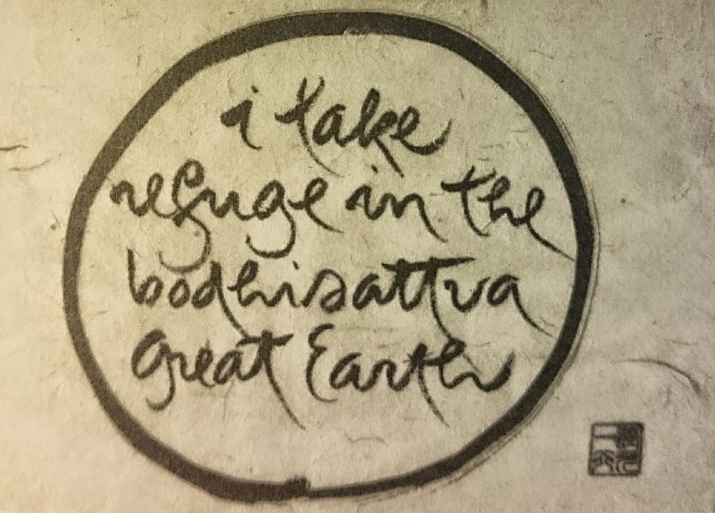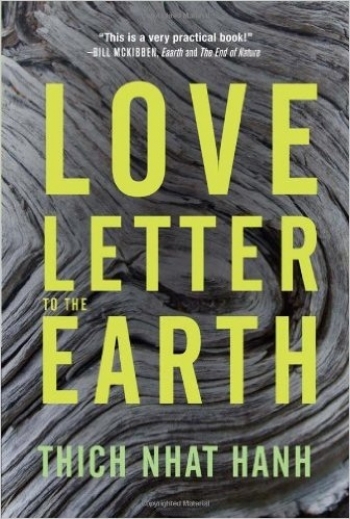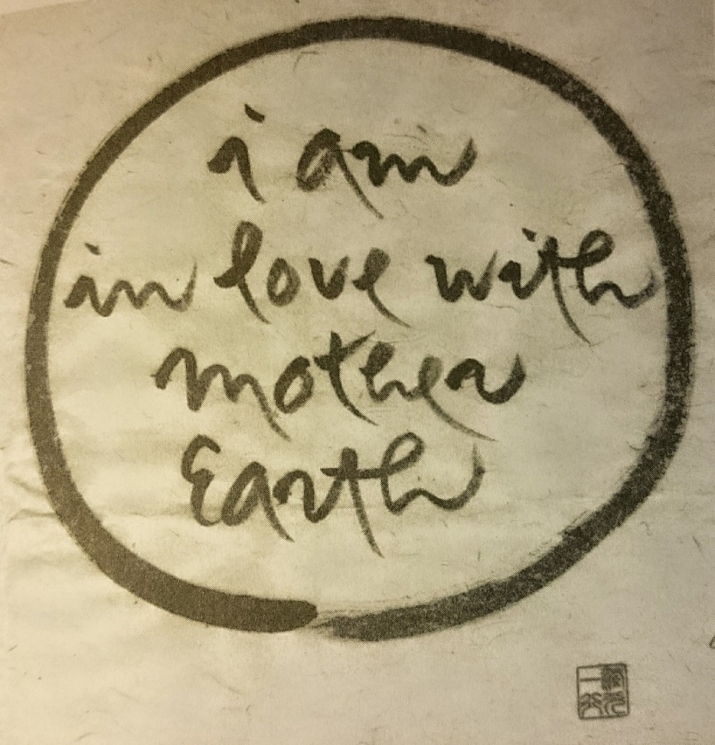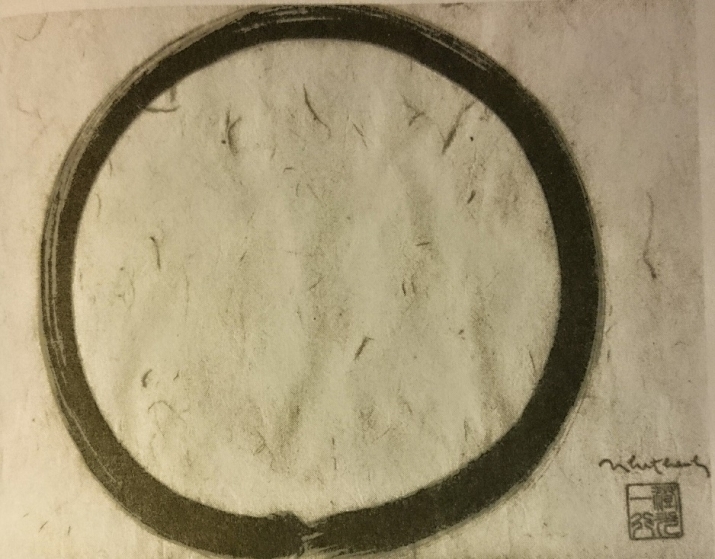Love Letter to the Earth – Book Review
By Roz Keep
Buddhistdoor Global
| 2015-08-21 | A Hong Kong resident for many years, over the summer I have been visiting friends and family in the UK. One of the highlights was spending five days at a Family Camp in Bridport, Dorset, with 50 or so warm-hearted nature lovers who camp in a field for one week every year in order to reconnect with nature. Here, they can remind themselves to slow down, relax, and recharge their energy. In this wide, green field, their connection to the Earth can be reawakened.
I kept a tea bag label from one of my many cups of tea boiled on the fire. On it there is an anonymous quote, “Look at the optimism of nature,” and I did: pollution-free skies with billions of stars and the Milky Way clearly visible at night; tall, straight poplar trees lining one side of the field; ripening blackberries emerging from the hedgerows by the stream; and the soft, green grass on which we lay at night. It was a magical week where I made new friends—with people and animals, English plants, and the ancient Dorset landscapes. It was such a special place to reconnect with Mother Earth.
Love Letter to the Earth, by well-known Vietnamese meditation teacher Thich Nhat Hanh, is the perfect book to teach us how to connect with Mother Earth if we are not able to find time to camp or walk in nature. The Zen master expresses what other religious leaders, including the Pope, are talking so much about these days: that we are in the midst of an environmental crisis unprecedented in human experience and must stop seeing the Earth as a resource to be used up, and that we must start a revolution in consciousness to consider the Earth as a living, breathing organism that we can deeply connect with in meditation and in our daily lives.
Published in summer 2013 by Parallax Press, the publishing division of Unified Buddhist Church, Inc., California, Love Letter to the Earth is an inspiring and important guide to cultivating deep “Earthly Love” and is a book I would carry both in my camping knapsack and my briefcase in the city. Only 142 pages long, this profound little book is a meditation guide with a difference—it is a call to humans to wake up and fall in love with Earth our home and Mother. On page 14, Thich Nhat Hanh says, “If you look deeply and feel this connection to the Earth, you will also begin to feel admiration, love and respect. When you realize the Earth is so much more than simply the environment you will be moved to protect her as you would yourself.” The book is also beautifully illustrated with calligraphy “sayings” written inside perfectly drawn inky circles.
We are reminded that we are all made of the same elements and molecules—stardust, in fact—as the planet on which we live and are born from. Thich Nhat Hanh quotes The Lives of a Cell (1974) by biologist Thomas Lewis, in which he describes our planet as a living organism: “. . . and after some reflection he arrives at the insight that the whole planet is like a giant living cell whose parts are all linked in symbiosis” (p. 14). Love Letter to the Earth could help us make the crucial shift in perception and spark the necessary effort we should make to stop the destructive path we have created for ourselves in the industrial age.
We are gently encouraged to meditate using “Practices for Falling in Love with the Earth,” which include mindful breathing, sitting, eating, drinking, and walking. “Each time we practice mindfulness we’re able to generate more love and compassion for the Earth as well as ourselves, which leads to more understanding and insight,” says Thich Nhat Hanh. In Chapter One, he admits to “feeling a tremendous sense of awe and wonder at the immense energy of the universe,” and says “we may be tempted to believe it was created by a human-like God. . . . However I don’t think God is an old man with a white beard sitting in the sky but he instead is inside every living being. What we call ‘the divine’ is none other than the energy of awakening, of peace, of understanding, and of love, which is to be found not only in every human being, but in every species on Earth” (p. 18). He continues on page 20 with: “The Earth has all the virtues we seek, including strength, stability, patience, and compassion. She embraces everyone. We don’t need blind faith to see this. We don’t need to address our prayers or express our gratitude to a remote or abstract deity with whom it may be difficult or impossible to be in touch. We can address our prayers and express our gratitude directly to the Earth. The Earth is right here. She supports us in very concrete and tangible ways. No one can deny that the water that sustains us, the air we breathe, and the food that nourishes us are gifts from the Earth.”
On the pages introducing Chapter Two, entitled “Healing Steps,” there is a quote from John Muir, the early 20th century Scottish naturalist and explorer of the American wilderness: “When we contemplate the whole globe as one great dewdrop, striped and dotted with continents and islands, flying through space with other stars all singing and shining together as one, the whole universe appears as an infinite storm of beauty.” How well that resonated with me when I looked for and saw the August meteors flashing across the night sky at our campsite!
After the mindfulness practices in the book, there is a section titled “Ten Love Letters to the Earth,” which Thich Nhat Hanh has written to stimulate us to perhaps write our own. The first letter begins: “Dear Mother Earth, I bow my head before you as I look deeply and recognize that you are present in me and that I am part of you. I was born from you and you are always present, offering me everything I need for my nourishment and growth. My Mother, my Father, and all my ancestors are also your children. We breathe your fresh air. We drink your clear water. We eat your nourishing food. Your herbs heal us when we are sick. You are the mother of all beings” (p. 102). This idea contradicts greatly the more common perspective that we are somehow separate from and superior to nature.
I would love to invite my primary-school-aged art students to write and paint their own love letters to the Earth, as I am certain they will understand the concepts in the book perfectly well, as children are apt to do when it comes to appreciating nature. Thich Nhat Hanh invites us all to write our own love letters and to try connecting with the concepts in the book about a living, breathing Planet Earth. The trick is to get the adults and leaders of the world to start thinking in this way. As chairperson of a small green group in Hong Kong, I am constantly encouraged by the children’s enthusiasm and the work they do, but immensely discouraged and worried about the mess we adults are making of the world. If She is alive, She must be trying to warn us through the wisdom of this important and useful book.
In his conclusion, Thich Nhat Hanh suggests that humans create a “cosmic religion” based not on myth, belief, or dogma, but on the evidence and insight of “interbeing,” which was the word coined by the lunar astronauts who had the insight of connectedness of all of humanity and life on Earth when they saw the planet for the first time from space.
This is a small book with a hugely important message. I hope it will become a widely known and well-loved “bible” for all who respect our natural world, for their own healing and development and especially that of the Earth. We owe it to ourselves to listen to this great message and to start our mindful journey whenever we can and wherever we are in the world.



















